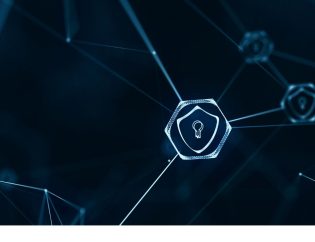
Introduction
What is data encryption? In today’s digital landscape, data encryption is a cornerstone of data privacy and protection, essential for businesses and individuals alike. With growing threats to digital security, understanding encryption is key to safeguarding sensitive information from unauthorized access. This article explores the intricacies of data encryption, its types and its role in enhancing data security.
What is Data Encryption?
Data encryption is a process that transforms readable data (plaintext) into an unreadable format (ciphertext), ensuring that only authorized parties can access the information. This security measure protects data from unauthorized access and is widely used in various applications, from financial transactions to personal communications. In essence, encryption is like a digital lock, where only those with the correct key can access the content.
Types of Data Encryption
There are two primary types of data encryption:
Symmetric Encryption
Asymmetric Encryption
Other encryption methods include transparent data encryption (TDE) for encrypting databases and data at rest encryption for securing stored data.
Quick Comparison Table
| Encryption Type | Description | Best For |
|---|---|---|
| Symmetric Encryption | Uses a single key for both encryption and decryption. | Speed-sensitive applications |
| Asymmetric Encryption | Uses two keys: a public key for encryption and a private key for decryption. | High-security needs |
| Transparent Data Encryption (TDE) | Encrypts databases automatically, providing security without affecting applications. | Database security |
| Data at Rest Encryption | Protects data stored on devices or servers from unauthorized access. | Storing sensitive information |
Key Benefits of Data Encryption for Enhanced Security and Compliance
Data Security –
Protects sensitive information from unauthorized access.
Data Integrity –
Ensures that data remains accurate and unaltered.
Cloud Security –
Secures data stored in the cloud against breaches.
Enhances Privacy –
Safeguards personal and organizational privacy.
Breach Mitigation –
Reduces the impact of data breaches by making stolen data unusable.

The Importance of Data Encryption
Data encryption is vital for protecting personal, financial and corporate information. With cyber threats on the rise, encryption shields sensitive data from unauthorized access, breaches and tampering. In addition, encryption helps companies comply with regulatory requirements such as GDPR, HIPAA and CCPA, which mandate the protection of personal data.
Quote:
“Encryption is the last line of defense for data. Without it, sensitive information is vulnerable to exposure.” — Leading Cybersecurity Expert
How to Encrypt Data: Best Practices
Ensuring data protection involves implementing best practices for how to encrypt data effectively:
Use Strong Encryption Algorithms:
Opt for industry-standard algorithms like AES-256 for robust security.
Encrypt Data at Rest and in Transit:
Protect data both during storage and when it’s being transmitted.
Use Multi-Factor Authentication (MFA):
Enhance security by requiring multiple forms of verification.
Regularly Update Encryption Keys:
Rotating keys frequently reduces the risk of compromised encryption.
Implement End-to-End Encryption:
For sensitive information, consider end-to-end encrypted data, which ensures only the sender and receiver can access the data.
Data Encryption Standards
There are multiple data encryption standards (DES) used worldwide. Let’s take a closer look at some popular ones:
Data Encryption Standard (DES):
A symmetric-key algorithm originally developed in the 1970s, widely used but now considered outdated due to advancements in computing power.
Advanced Encryption Standard (AES):
Developed as an improvement over DES, AES is a symmetric algorithm used in modern applications for its efficiency and strong encryption capabilities.
Double Data Encryption Standard (Double DES):
An enhancement of DES, but its security improvements are limited, making AES the preferred choice.
Triple Data Encryption Standard (Triple DES):
Uses three rounds of DES encryption, offering more security than the original DES, though still less effective than AES.
Key Points for Selecting Encryption Standards
AES-256:
Ideal for strong, long-term encryption needs.
Double DES/Triple DES:
Suitable for compatibility with legacy systems but not recommended for new applications.
End-to-End Encryption:
Essential for protecting sensitive communications.
Customer Testimonial
“Our organization implemented encryption measures across all departments and the peace of mind has been invaluable. Knowing our data is protected from prying eyes has been a game-changer.”
— Sarah J., IT Manager, SecureNet Solutions
Conclusion
Data encryption is essential for safeguarding sensitive information in an increasingly digital world. By implementing encryption practices, organizations can protect data from unauthorized access, comply with regulations and build trust with their customers. As a leading Cybersecurity Services Company, Hyper Secure offers customized encryption solutions tailored to meet your business’s data security needs, helping you navigate and mitigate today’s digital threats effectively.
FAQs
1. What is data encryption?
Data encryption converts readable data into a secure format that only authorized users can access, protecting it from unauthorized access.
2. What is data encryption standard (DES)?
DES is an older symmetric encryption standard that protects data using a single key, though it’s less secure by today’s standards.
3. How to encrypt data effectively?
Use strong encryption algorithms, ensure encryption at rest and in transit and regularly update encryption keys for optimal security.
4. What is transparent data encryption?
Transparent Data Encryption (TDE) automatically encrypts data in databases, providing additional security without affecting application functionality.
5. What is end-to-end encrypted data?
End-to-end encryption ensures that data is accessible only by the sender and intended recipient, commonly used in secure messaging.
6. How does data encryption prevent unauthorized access?
Encryption scrambles data into unreadable code, making it accessible only to those with the correct decryption key.








